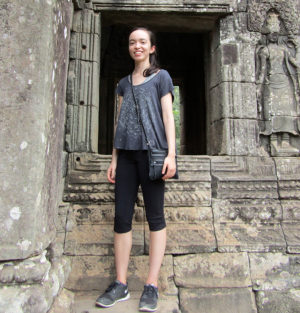Summer travels to Cambodia
I had the incredible privilege of visiting Cambodia’s Angkor Wat, the largest religious complex in the world, and home of the some of the finest selections of art and architecture from the Khmer civilization.
To travel across the globe is quite a commitment, but it was worth every uncomfortable flight to see the beauty contained in the walls of Angkor Wat, Angkor Thom, and the other surrounding temples.
No matter how you analyze the sights of the temples, they truly are marvels to witness. Behind every wall, in every ornate doorway, there are details worthy of closer inspection—even the intricate precision of the masonry is something of a miracle. The buildings we see nowadays are supported by additional structural material, but every stone in these temples is held in place by the magic of gravity.

It is hard to imagine the temple sites as they were hundreds of years before. The steep, seventy-degree angle of the staircase leading to the apex of Angkor Wat is intimidating and otherworldly. As you ascend, it feels as if you are entering a sacred, meditative space—an inherent quality of the temple even now as we visit the site out of context, ignorant of the nature of the civilization and its people.
At the major temples it is now impossible to avoid crowds of tourists with selfie sticks, which is why it really was nice to visit less-trafficked temples. Banteay Srei is a must-see, with its gorgeous, red sandstone carvings, so well-preserved that they appear new though they were built in the tenth century.
You don’t have to be an art and history enthusiast to enjoy what Angkor has to offer. It is an unique example of human accomplishment on a grand scale, and unlike any other in the world.
